Tokyo Travel: Train Ride Time and Routes to Asakusa and Major Destinations

As Tokyo is one of the largest cities in the world, travel in the metropolis may take longer than you expect. Learn how long train, subway, and metro rides take in Tokyo between major stations and the fastest, most efficient routes between Asakusa, Shibuya, Tokyo Skytree, and other places.
Travel in Tokyo - Ride Time on Public Transportation
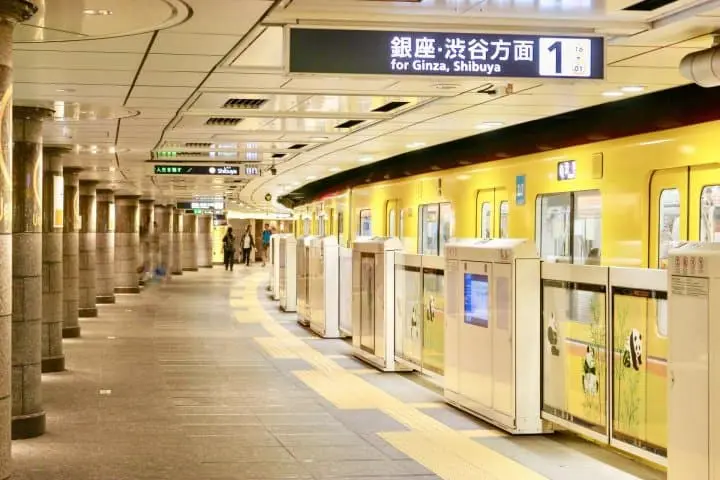
A train on the Tokyo Metro Ginza Line
Tokyo is regarded as one of the largest cities in the world, with a massive metropolitan center of 23 wards spanning 627 square kilometers (242 square miles). The entire Tokyo area, consisting of several municipalities and the Ogasawara Islands, spans 2,193.96 square kilometers or 847 square miles.
Due to its astonishing size and complex transit systems, travel in Tokyo takes time. Some spots are within walking distance or only take a few minutes via train. However, for example, getting from Asakusa to Odaiba may take more time than you expect. Knowing how long it takes to get from one spot to the next will make it easier to plan and enjoy your day in the big city.
This article covers the time required to travel around Tokyo using public transportation like JR trains, Tokyo Metro, and Toei Subway. Continue reading to find out the fastest and simplest ways to get to Shibuya from Asakusa, Roppongi to Ginza, and other routes to major neighborhoods.
We highly recommend travelers use the JR Pass and the Tokyo Subway Ticket to save money on traveling on JR trains, the Tokyo Metro, and Toei Subway. These discount passes help you navigate efficiently throughout Tokyo and beyond.
Details and Reservations: JR Pass, Tokyo Subway Ticket
Asakusa to Shibuya
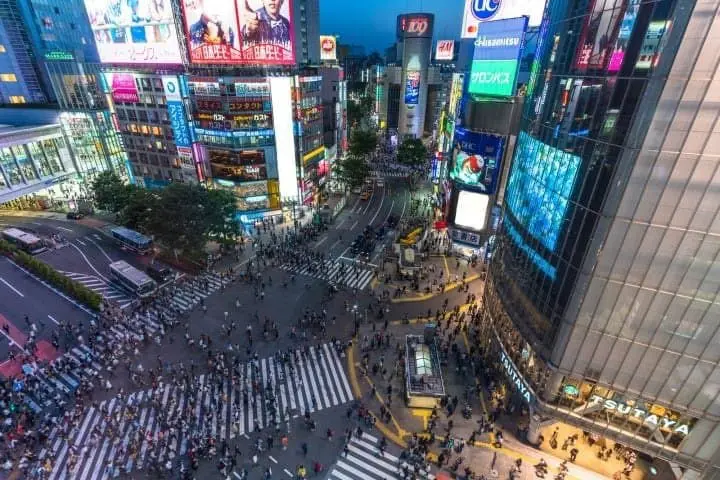
View of Shibuya Scramble Crossing. Picture from Shibuya Scramble Crossing - 5 Best Viewing Spots (Photo by Pixta)
Getting from Asakusa to the Shibuya area takes some time, as you need to pass through Ueno, Akihabara, the Tokyo Station area, and Omotesando. The simplest and fastest way to go between Asakusa Station and Shibuya is listed below.
| Public Transit Line(s) | Stations | Required Time (One-way) | Fare (One-way) |
| Tokyo Metro Ginza Line | Asakusa Station, Shibuya Station | 34 minute-ride | 250 yen |
Please note there are different Asakusa stations and several lines at Shibuya Station. Follow the signs, which will have English on them, and ask an employee should you have any questions.
Read also
Asakusa to Odaiba
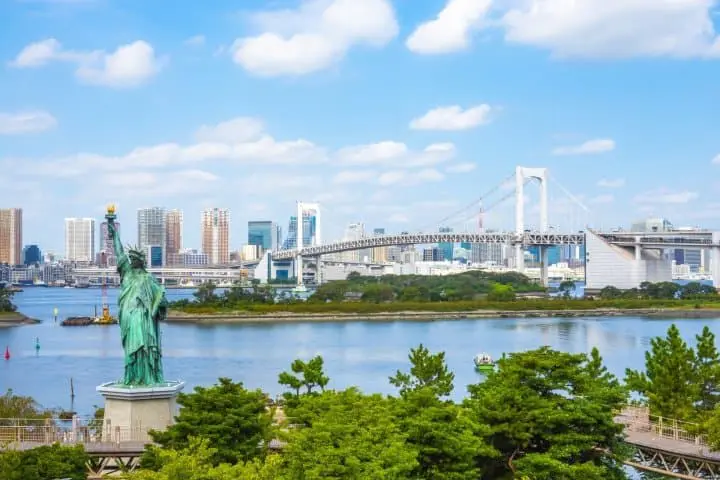
Rainbow Bridge in Odaiba
Traveling between Asakusa and Odaiba, famous for TeamLab museums, shopping, and gaming, requires riding two trains. The transfer involves walking from one train to the next, so changing train lines can take some time. It is recommended to prepare for taking an extra five or ten minutes for this purpose. Refer to the methods below for efficient ways of navigating.
| Public Transit Line(s) | Stations | Required Time (One-way) | Fare (One-way) |
| Toei Asakusa Line, Yurikamome | Asakusa Station, Shinbashi Station, Daiba Station | 35 minutes minimum | 550 yen |
| Tokyo Metro Ginza Line, Yurikamome | Asakusa Station, Shinbashi Station, Daiba Station | 45 minutes minimum | 530 yen |
The Yurikamome travels above ground and gives riders gorgeous views of the bay area, riding from Shimbashi Station. Please note there are multiple stops on the Yurikamome in the Odaiba area. The station nearest to most main attractions is Daiba Station.
Read also
Ueno to Tokyo
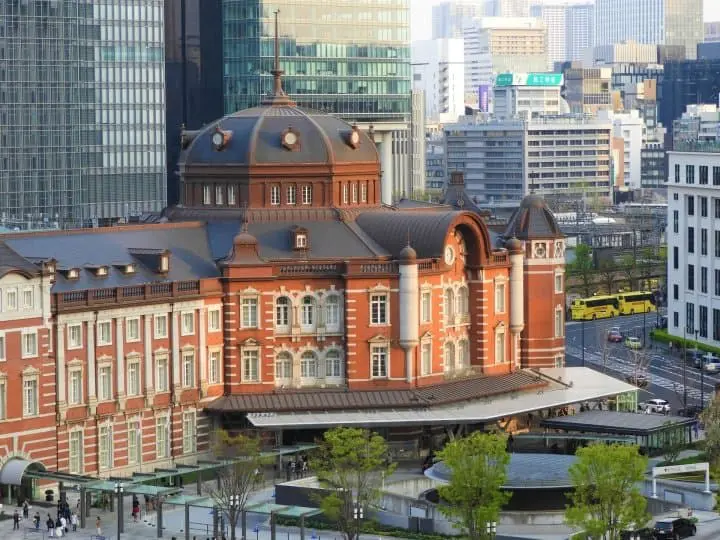
Marunouchi side of Tokyo Station
JR Ueno Station and JR Tokyo Station are directly linked via multiple train lines, making it easy to travel between them easily.
| Public Transit Line(s) | Stations | Required Time (One-way) | Fare (One-way) |
| JR Yamanote Line | Ueno Station, Tokyo Station | 8 to 9 minute-ride | 160 yen |
| JR Keihin-Tohoku Line | Ueno Station, Tokyo Station | 7 minute-ride | 160 yen |
Ueno to Akihabara
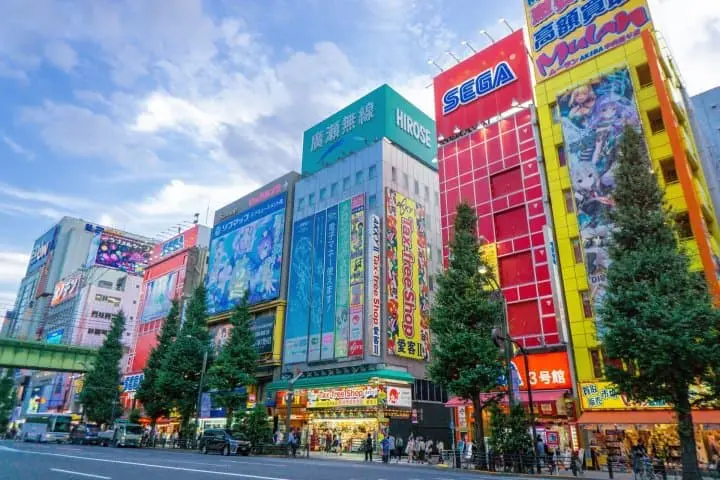
Akihabara Chuo-dori Street
Ueno and Akihabara are two popular destinations that are easy to travel between. The distance is walkable, taking around 20 minutes, but riding the train or subway takes just three minutes.
| Public Transit Line(s) | Stations | Required Time (One-way) | Fare (One-way) |
| JR Yamanote Line | Ueno Station, Akihabara Station | 3 minute-ride | 140 yen |
| JR Keihin-Tohoku Line | Ueno Station, Akihabara Station | 3 minute-ride | 140 yen |
| Tokyo Metro Hibiya Line | Ueno Station, Akihabara Station | 3 minute-ride | 170 yen |
Choose the transportation method that fits best with your budget and location; those with a valid Japan Rail Pass should travel using a JR line, and those with a Tokyo Metro pass should use the Hibiya Line.
Read also
Harajuku to Shinjuku

View of Shinjuku Station area. Photo by Pixta
Harajuku and Shinjuku are one station apart from each other, making it possible to walk between them. However, the walk is around 20 minutes, making it is simpler and faster to take the train. It takes 4 to 5 minutes to get to either JR Harajuku or JR Shinjuku Station and requires no transfers. See the table below for details.
| Public Transit Line(s) | Stations | Required Time (One-way) | Fare (One-way) |
| JR Yamanote Line | Harajuku Station, Shinjuku Station | 4 to 5 minute-ride | 140 yen |
For those traveling to specific areas in Shinjuku, like Shinjuku Sanchome, known for its excellent restaurants and bars, taking the Tokyo Metro Fukutoshin Line from Meijijingu-mae Station is another option.
Tokyo to Shinagawa
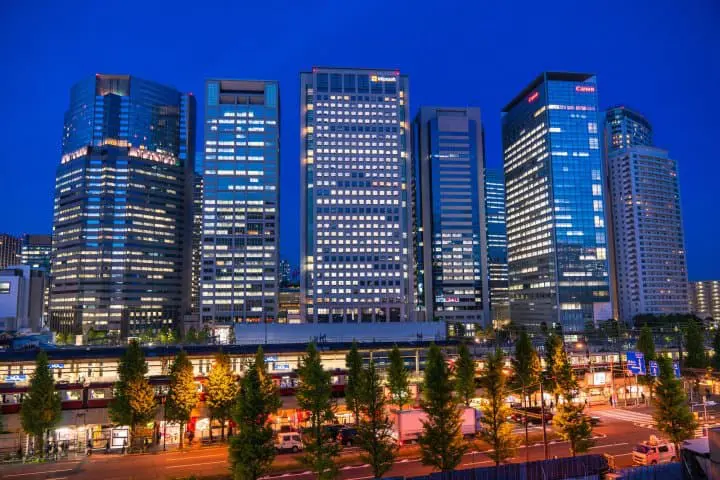
Shinagawa Station at night. Photo by Pixta
Tokyo and Shinagawa stations are main stops on the Shinkansen. They are very large stations, operating multiple train lines and railway companies. To get from JR Tokyo Station to JR Shinagawa Station, the stations the Shinkansen run on, it takes around 8 to 12 minutes, depending on which train you ride. See the table below for times and which lines to use.
| Public Transit Line(s) | Stations | Required Time (One-way) | Fare (One-way) |
| JR Tokaido Main Line | Tokyo Station, Shinagawa Station | 8 minute-ride | 170 yen |
| JR Keihin-Tohoku Line | Tokyo Station, Shinagawa Station | 9 minute-ride | 170 yen |
| JR Yamanote Line | Tokyo Station, Shinagawa Station | 12 minute-ride | 170 yen |
The fastest way to travel in this case is by using the JR Tokaido Main Line, not the Yamanote Line.
Please note that there is also a Keikyu Shinagawa Station, which is convenient for getting to Narita and Haneda airports, Asakusa, and Yokohama. The Shinkansen, however, does not run on this station, so make sure you are walking through the correct ticket barrier if you depart from Shinagawa. Keikyu Shinagawa Station does not connect directly to Tokyo Station, either.
Read also
Ginza to Roppongi
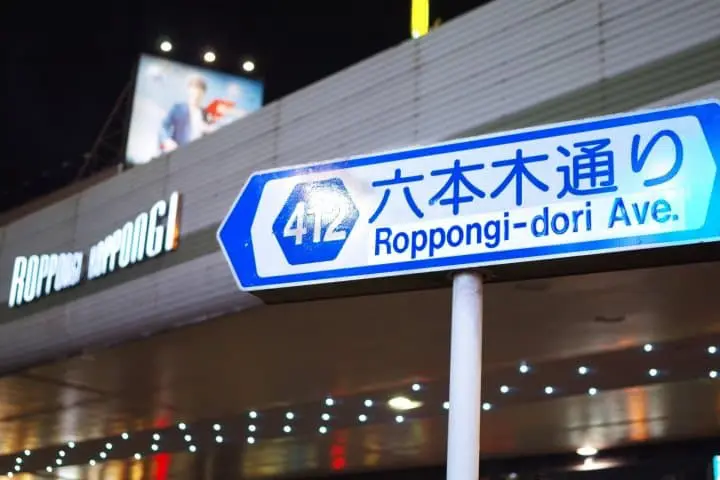
Roppongi Avenue
Ginza and Roppongi are popular neighborhoods offering different forms of entertainment. Ginza is mostly known for its high-class shops and cafes, while Roppongi has museums and a lively nightlife. Going between these spots only requires one train and is quick.
| Public Transit Line(s) | Stations | Required Time (One-way) | Fare (One-way) |
| Tokyo Metro Hibiya Line | Ginza Station, Roppongi Station | 4 to 5 minute-ride | 170 yen |
Ginza Station and Roppongi Station are relatively close to another, making it easy to visit both in one day.
Read also
Ikebukuro to Tokyo Skytree
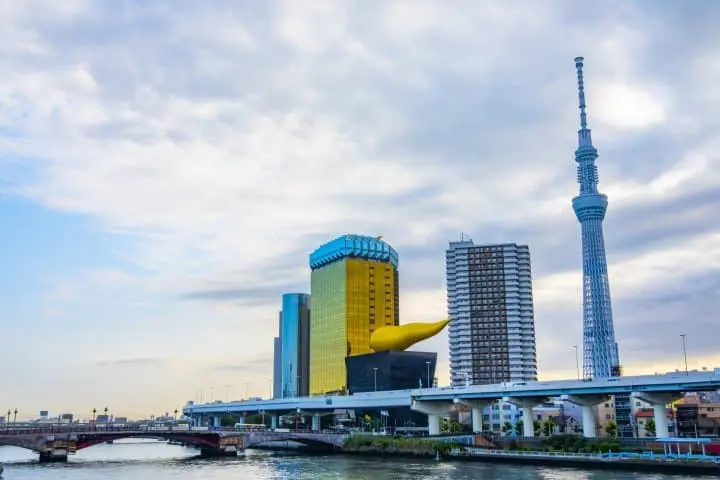
Tokyo Skytree from across the Sumida River.
Ikebukuro and the Tokyo Skytree area in Sumida are full of things to do, from great shopping for fashion and anime merchandise to astonishing views of the city. These popular destinations are located relatively far apart from each other, however, and require train transfers.
| Public Transit Line(s) | Stations | Required Time (One-way) | Fare (One-way) |
| Tokyo Metro Marunouchi Line, Tokyo Metro Hanzomon Line | Ikebukuro Station, Otemachi Station, Oshiage Station | 44 minute-ride minimum | 250 yen |
Changing trains at Otemachi Station may take some time to do, especially if it is rush hour. Be patient and be sure to follow signs for the Hanzomon line (there is English signage).
Read also
Tips for Riding Trains, Subway, and Metro
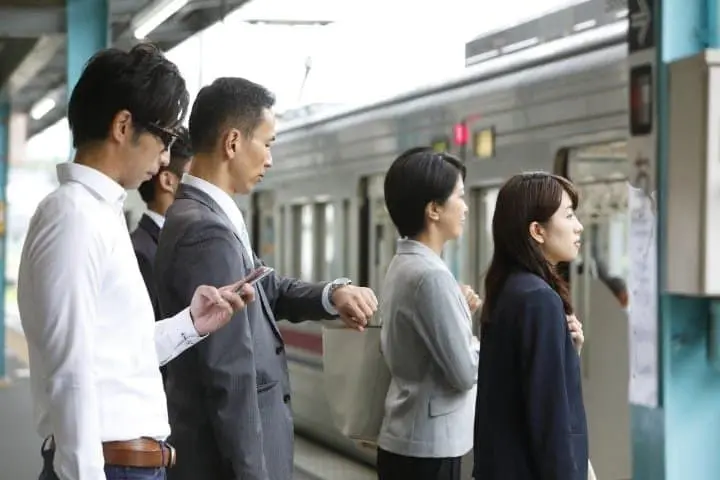
Picture from 16 Etiquette Tips When Riding Trains In Japan (Photo by Pixta)
The times mentioned above only display the time required to go from station to station. It takes longer to walk to the station, find the appropriate line, and walk to the platform. Riders are encouraged to leave an extra ten to fifteen minutes to navigate correctly and smoothly. Crowds and the potential of getting lost inside the station may slow down your departure. When in doubt, ask a train station employee for directions.
Be sure to make use of the Japan Rail Pass for the JR train lines and discount passes, like the Tokyo Subway Ticket, allowing for unlimited rides on the Tokyo Metro and Toei Subway lines for a specific amount of time (24-, 48-, and 72-hour passes are available). In doing so, you will save money and time on buying individual tickets.
Plan Your Day and Ride Public Transportation in Tokyo!
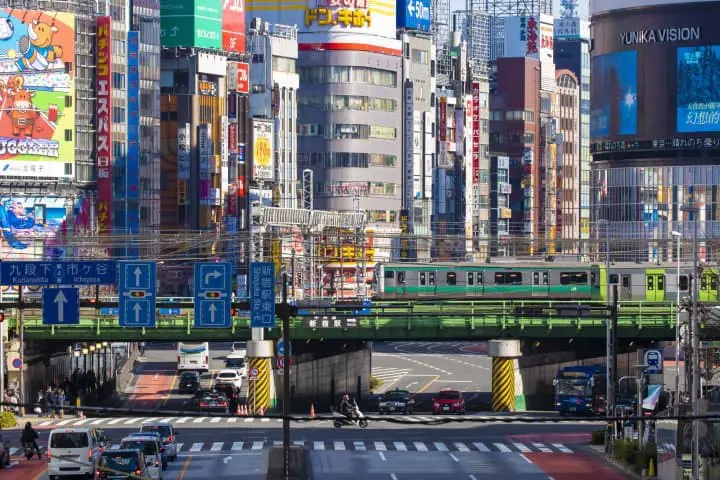
The time it takes to travel around Tokyo is something helpful to be aware of for a smooth, less stressful trip. People new to Tokyo are recommended to plan day activities in areas close to another for the most memorable trip.
Read also
Main image by Pixta
An awkward Southern California native living in Osaka. Originally came to Japan on the JET Program in Hyogo Prefecture (Kansai) after studying economics in college, and decided to try to stay.
IUC 10-month program graduate. Vegan and interested in all things Japan-related. Left-handed. Very fond of Kansai.


























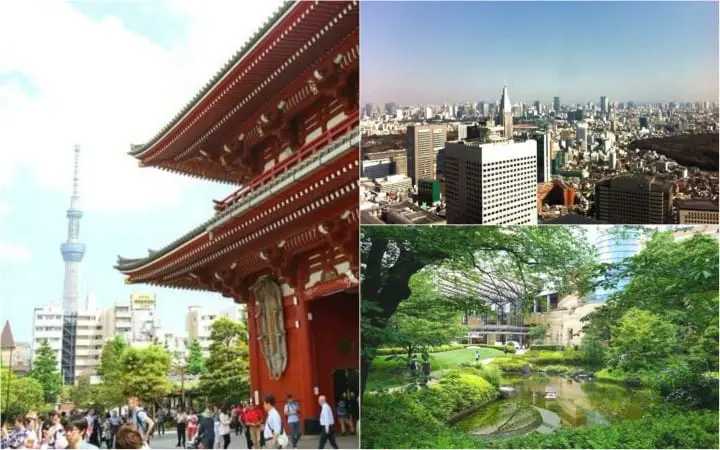




























![[Gunma] 5 recommended gourmet foods at Kawaba Denen Plaza Roadside Station!](https://resources.matcha-jp.com/resize/720x2000/2025/02/26-225970.webp)
![[Kanazawa] Enjoy the world of gold leaf to the fullest in the city with the highest production volume in Japan](https://resources.matcha-jp.com/resize/720x2000/2025/11/12-249564.webp)
![[2026] Family Winter Trip to Suzuka Circuit! – For Both Day trips and Overnight Stays!](https://resources.matcha-jp.com/resize/720x2000/2025/12/26-254097.webp)
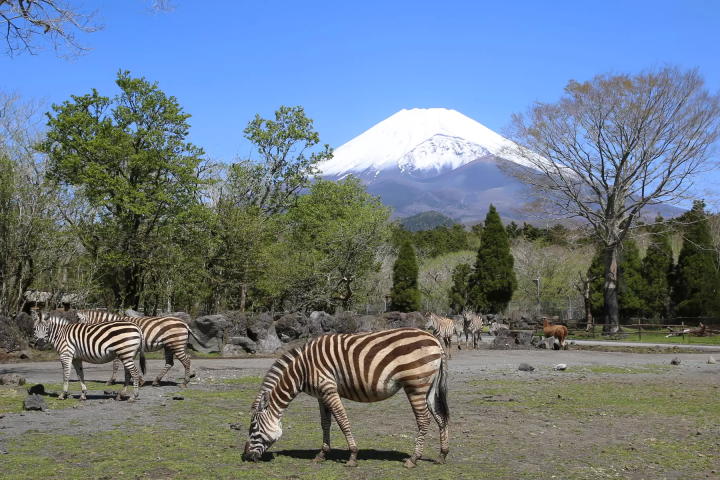
![[2026] Top 5 Strawberry Picking Spots in Tokushima, Naruto| Farms and Access Guide for January to May](https://resources.matcha-jp.com/resize/720x2000/2025/03/06-227165.webp)